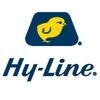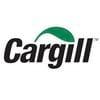I. INTRODUCTION
Mineralization of the chicken embryo requires calcium (Ca) and phosphorus (P)’ macro minerals supplied to the embryo by eggshell + yolk and yolk, respectively. Towards the end of incubation and after hatch, phosphorus in the residual egg yolk is minimal (Li et al., 2014). Yolk calcium reserves at hatch, however, are similar (Yair and Uni 2011) or even higher (Richards and Packard 1996) compared to eggs at setting, as a result of eggshell calcium being transferred to the yolk throughout incubation (Johnston and Comar 1955). In this case, yolk calcium reserves as hatching approaches would likely be sufficient to support neonatal skeletal requirements, but bone growth may be limited by the low egg phosphorus content. These findings, in addition to observations that embryonic bone growth reaches a plateau after 19 days of incubation (Li et al., 2014), suggest a nutritional limitation to embryonic bone growth late in the neonatal period and therefore the need for completion of skeletal growth by day 19 of embryonic development. Under current dietary Ca levels in a typical broiler starter diet (9-10.5 g/kg), the P absorption might be compromised because neonatal mineral metabolic condition might be down regulating intestinal Ca absorption. Excess Ca in the lumen could in turn react with dietary inorganic P to form insoluble Ca orthophosphate and thus reduce P absorption (Selle et al., 2009). In this study, we tested the hypothesis that a significant decrease in the level of Ca at a constant dP of 4.6 g/kg in diet for the first 4 days of life may improve early growth and bone mineralization of newly hatched chicks.
II. MATERIALS AND METHODS
One thousand two hundred male Ross 308 broiler chicks, averaging 45 grams at arrival at the Research Centre, were randomly allocated to 40 floor pens, 30 birds per pen, giving 5 treatments with 8 replicates. Broiler starter diets, based on corn and soybean meal, were formulated to be equivalent with respect to energy (2800 AME kcal/kg), amino acid (11.5 g/kg dLys) and digestible phosphorus (4.6 g/kg dp) (Dutch Feeding Tables, 2007) but not calcium. Prior to formulating the diets, main ingredients were analyzed for Ca and P contents and data were used to formulate the experimental diets. Five diets were formulated to contain 3, 4, 6, 8 and 10 g/kg Ca. The lowest (3 g/kg) and highest (10 g/kg) Ca diets were formulated separately and intermediate level diets were produced by mixing these two diets in proportion to meet desired Ca levels. Experimental treatments did not contain phytase in order to prevent confounding effects on P availability as the efficiency of this enzyme to release P from phytate improves when diets contain reduced dietary Ca. Birds had ad libitum access to feed and water immediately after placement in the experimental unit and for the duration of the study. Birds and feed were weighed daily and one animal / replicate, with a body weight (BW) within 5 g/kg of the average pen BW were selected. These chicks were blood sampled for Ca and P serum analyses and euthanised. The right tibia was collected, cleaned, weighed and used for tibia ash determination. Performance data was analyzed as one-way ANOVA using the general linear models procedure of SAS in a completely randomized block design. Bone ash and serum were analyzed as repeated measures. Significant differences between means were detected by Tukey test when the model was significant at P0.05.
III. RESULTS
Table 1 - Influence of dietary calcium concentration on early growth of broilers fed pre-starter diets from placement to 4 days of age.
Table 1 shows the effect of the diets on growth to 4 days of age. Daily weight gain was slightly under Ross 308 performance objectives likely because of stress of chicks being handled daily. Increasing the dietary Ca level had detrimental effects on early growth. Body weight of the chicks fed 10 g/kg Ca was inferior to those fed diet with 4 g/kg Ca at day 2 and 3 and tended to be lower at day 4 (P=0.07). Despite improved daily weight gain, the feed intake of birds fed 4 g/kg Ca was improved only on the second day relative to broilers fed 10 g/kg Ca. Feed conversion figures were not markably affected by dietary treatment.
Bone growth in the first 2 days of age was minimal among all treatments (Figure 1). Minimal bone growth occurred during experimental period in birds fed the lowest Ca levels despite improved body weight. Mineralization increased from days 3 and 4 when chicks were fed pre-starter with 6, 8 or 10 g/kg Ca. Despite reduced bone mineralization, no incidence of bone lameness or skeletal abnormalities were observed in this study. Likewise, mortality was negligible and not related to any treatment.
Overall, increasing dietary Ca level from 3 to 10 g/kg was followed by increased Ca serum in the blood; regardless of diet the blood concentration of this mineral decreased in the first 3 days followed by an increase at day 4 (data not shown). With respect to P, dietary treatment did not influence P level in the serum; however, its concentration varied in the first 4 days of life. Serum P level increased up to the second day of life after which it appeared to plateau (Figure 2).
Figure 1 - Influence of dietary Ca on tibia ash (mg) deposition of broilers fed pre-starter diets from placement to 4 days of age. a-f Means between chart bars with unlike superscripts differ significantly at P 0.05.
Figure 2 - Time effect on P concentration in the serum of juvenile chickens. . a -c Means between chart bars with unlike superscripts differ significantly at P 0.05.
IV. DISCUSSION
In the present study, increasing dietary Ca concentration decreased weight gain in diets without phytase. Abdollahi et al (2016) reported that increasing dietary Ca concentration in the starter diet (1-21d) also suppressed growth, both without and with added phytase. Despite increased body weight, the bone ash deposition was minimal when chicks were fed diets with a low calcium level; yet no incidence of clinical skeletal disorder or mortality was observed. In contrast, 10 g/kg dietary Ca limited performance in the first days after hatch despite improved mineral deposition.
The mechanisms leading to the paradoxical effect of decreasing dietary Ca improving performance but reducing bone ash deposition is intriguing. Phosphorus is the major intracellular anion and it is a vital component of metabolic pathways involving the production of ATP. It is possible that, when birds are fed a diet with more bioavailable P (by reduced Ca inclusion), this mineral is delivered to sustain such metabolic routes, instead of bone mineralization. This would explain the physiological mechanism leading to increased body weight when newly hatched chicks are fed low calcium in the first days after hatch. The results from this study indicate that, despite reduced bone mineralization, 4 g/kg dietary calcium in pre-starter diets of broilers improves body weight gain and feed intake in the first two days compared to those fed 10 g/kg Ca. Further work is warranted to determine if providing pre-starter diet with reduced calcium level for newly hatched chicks improves broiler productivity during grow-out and whether it has any carry over effect on skeletal quality.
Presented at the 29th Annual Australian Poultry Science Symposium 2018. For information on the latest and future editions, click here. 
















